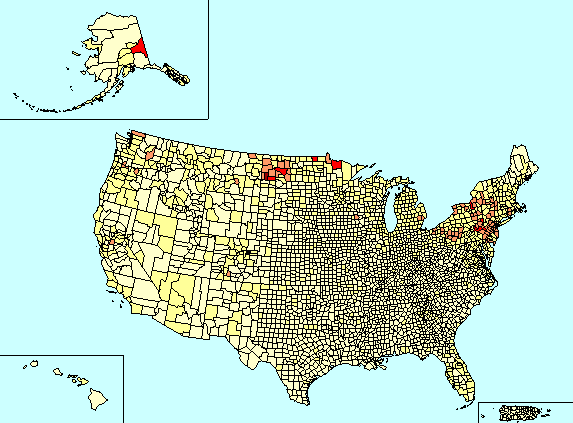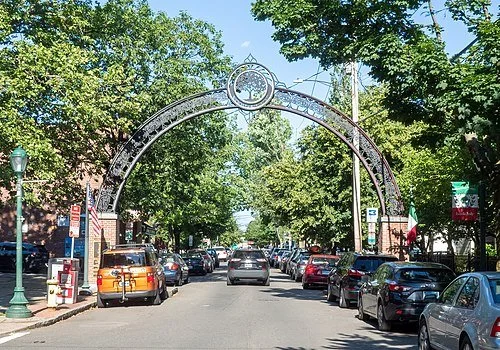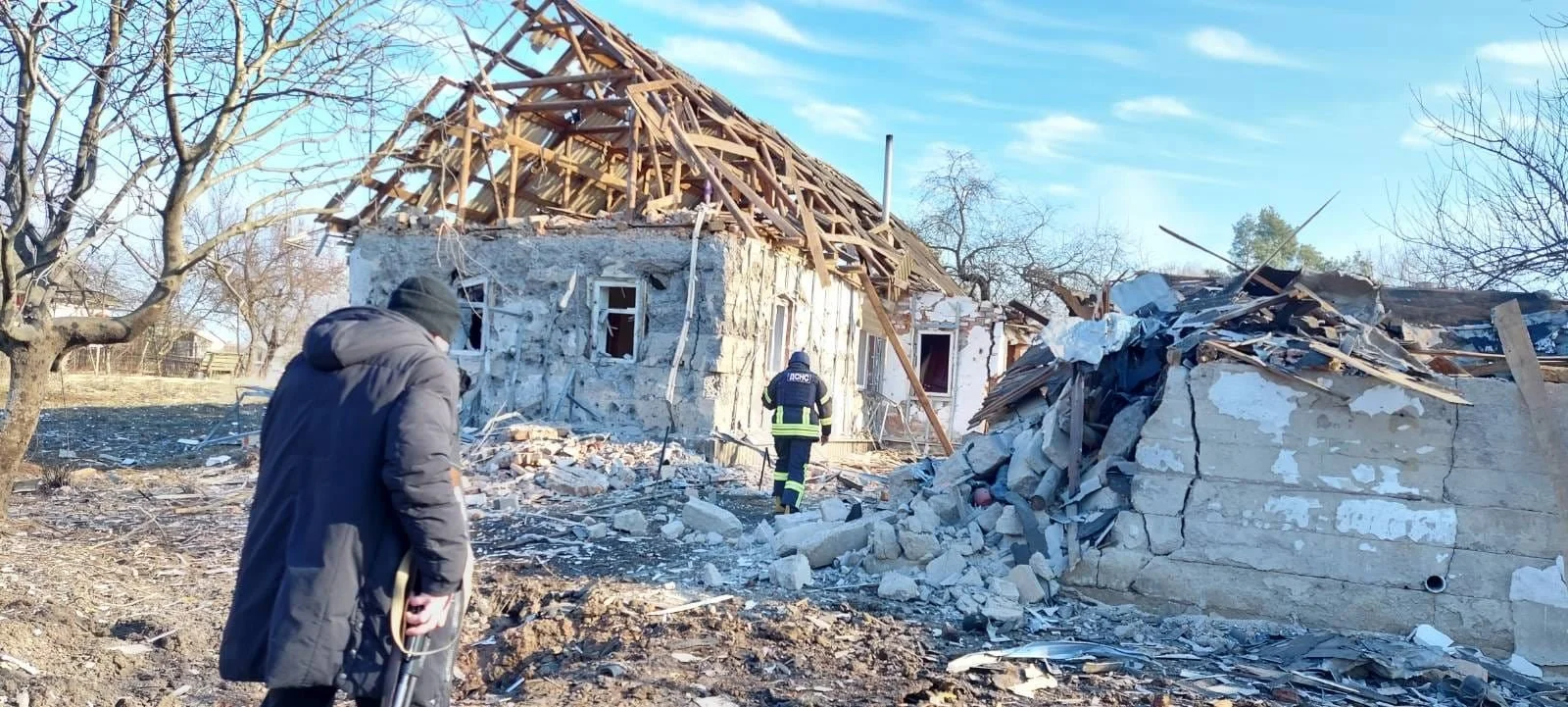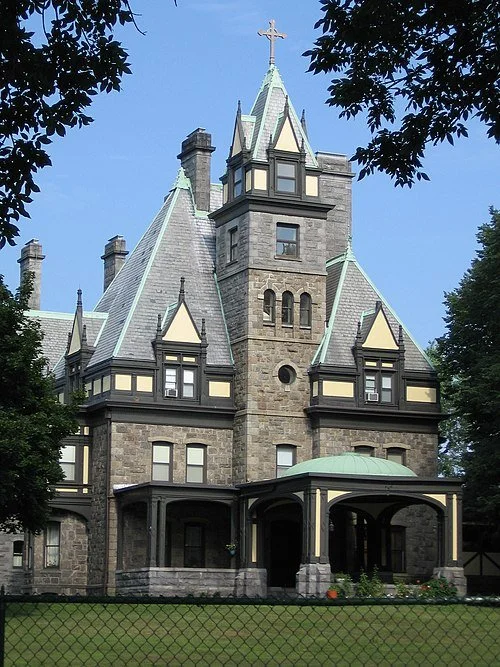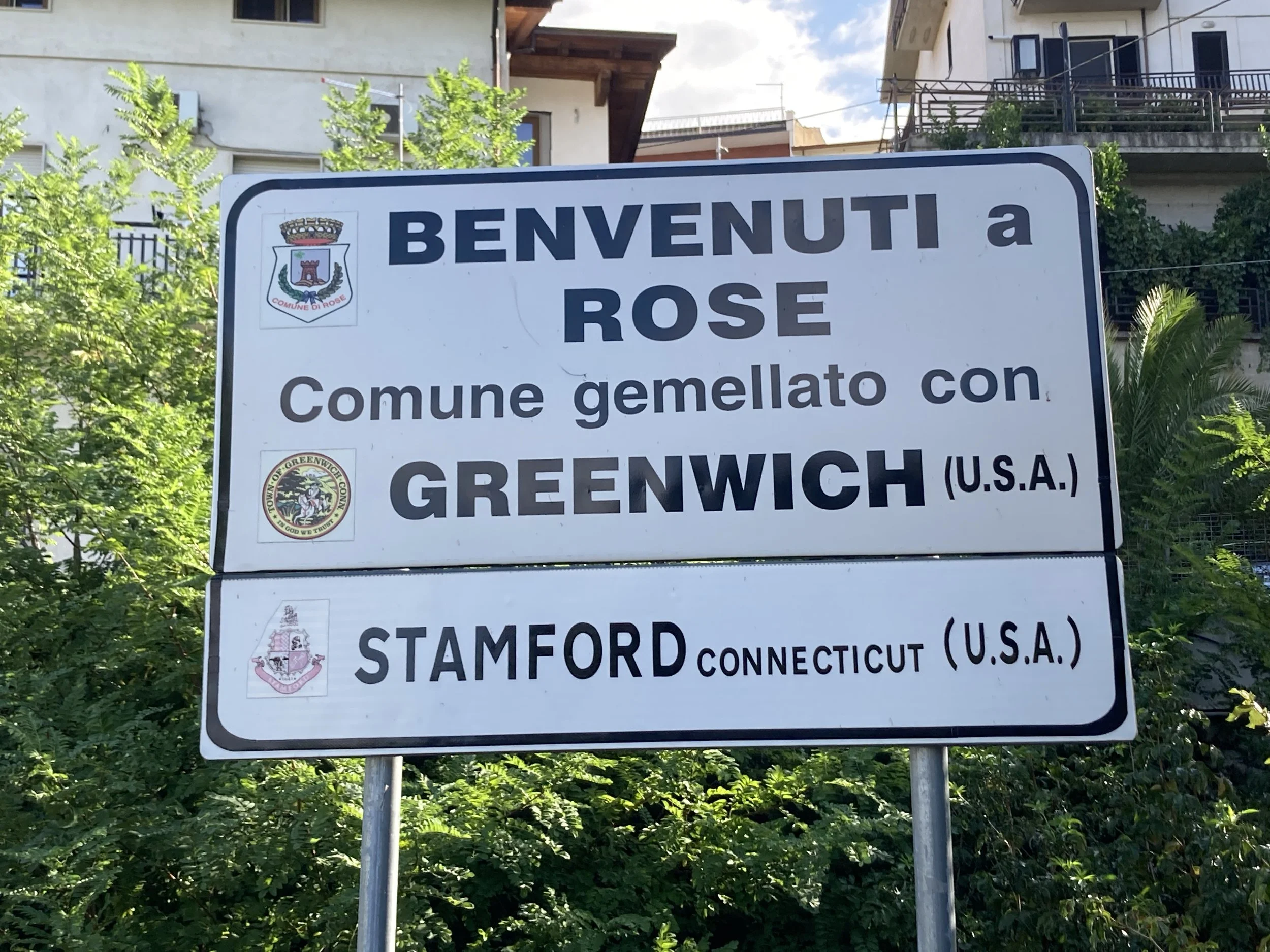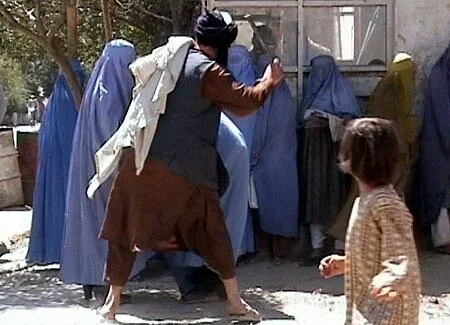
Chris Powell: Totalitarian ‘climate-change’ protestors
Climate-change protestors in Germany.
Cromwell Meadows, in Cromwell, Conn.
MANCHESTER, Conn.
When, in 1955, Rosa Parks, a courageous Black woman, refused to give up her seat to a white passenger on a bus in Montgomery, Ala., was arrested, and dramatically advanced the modern U.S. civil-rights movement, the connection between her protest and her objective was clear: to end the racial segregation maintained by the bus service.
When, in 1960, courageous Black college students sat down at the white sections of racially segregated lunch counters throughout the segregated South and refused to leave until they were served, the connection between their protest and their objective was clear again: to end the racial segregation maintained at of lunch counters.
In those protests and many others during that era, the demands of the protesters could be easily granted by the targets of the protest without any loss or harm to anyone.
But what is to be construed from the sort of protest that is erupting in Western Europe and now the United States, such as the protest that disrupted the final minutes of play at the Travelers Championship golf tournament in Cromwell, Conn., two weekends ago? The protesters, wearing shirts with the legend "No golf on a dead planet," ran onto the putting green and sprayed colored powder on it before police intercepted them, took them away, and charged them with criminal mischief.
The protesters in Cromwell want to eliminate oil and natural-gas fuels, in the belief that those fuels are causing devastating "climate change." In other venues such protesters are defacing paintings and statues. But the golf tournament, a major money-raiser for charity, and the defaced paintings and statues have no special connection to fuel use and their operators and custodians have no special responsibility for fuel policy. They don't use oil and gas any more than everyone else does.
Sometimes fuel protesters block roadways, halting traffic. Of course most vehicles use fuel, but most of their operators of the vehicles being blocked use fuel no more than everyone else does.
The fuel issue is a society-wide issue but the targets selected by the fuel protesters are not objectionable by the protesters' own standards, and hindering them won't affect fuel policy. The protesters have selected the targets instead for their capacity to cause annoyance when impaired and thus generate publicity.
But the fuel issue long has been getting plenty of publicity quite apart from the efforts of the protesters. It is a major political controversy in the United States and Western Europe, where it is politically correct to imagine that there are readily available and adequate alternatives to oil and natural gas. But fuel is not a political controversy in most of the rest of the world, and especially not in the developing world, which will be needing not just oil and natural gas but also coal, the dirtiest conventional fuel, for decades to come.
Calculating the benefits and harms of conventional fuels and striking a balance between them is a task for democratic politics. But the fuel protesters are so sure they are right, and so self-righteous, that they claim the right to nullify the rights of all people who disagree with them or don't heed them.
These protests go far beyond civil disobedience. They go far beyond criminal mischief as well. They are totalitarian. and any prosecutor who pursues the criminal charges from the golf tournament, and any court that tries them, should keep this in mind.
MORE SCHOOLS CRASH: Add Stamford to the list of Connecticut cities whose schools are getting out of control.
Teachers at Stamford's Turn of River Middle School say that they are being abused, bullied, threatened, and even assaulted by students, adding that the school administration has failed to report the assaults to the police.
The administration says it will make changes, including adding a third security officer to the school. That officer is needed not to protect the school against outsiders but against its own students, since under Connecticut law even the most disruptive students are almost impossible to expel, lest their feelings be hurt and the public notice social disintegration.
Chris Powell has written about Connecticut government and politics for many years (CPowell@cox.net) .
David Warsh: In the Ukraine war, look at the view from the other side
— Map by Viewsridge
The Ukrainian Cultural Center of New England headquarters in the Melrose, Mass., City Hall.
SOMERVILLE, Mass.
It was Kremlinologist Jonathan Haslam who spotted the overconfident press release and dubbed it Putin’s Premature Victory Roll. Two days after the invasion of Ukraine began a year ago, the Russian press service Novosti posted a broadside that began “A new world is coming into being before our very eyes.” In Haslam’s translation, lightly edited for clarity;
Russia’s military operation has opened a new epoch…Russia is recovering its unity – the tragedy of 1991, this horrendous catastrophe in our history, its unnatural caesura, has been overcome. Yes, at a great price; yes, through the tragic events of what amounts to a civil war, because now for the time being brothers are shooting one another… but Ukraine as anti-Russia will no longer exist.
By not leaving the Ukrainian question to future generations. Putin has taken upon himself a historic responsibility. The issue of national security, the creation of an anti-Russia out of Ukraine as an outpost for the West to pressure us is only the second most important among the key reasons [for acting]. Instead [presumed primary reason], the Great Russians, the Byelorussians and the Little Russians (Ukrainians) would come together as a whole.
So much for that. The triumphant proclamation was quickly taken down after it became came clear that it was premature. We know now that Russia’s planned lightning invasion of Ukraine, including the assassination of President Volodymyr Zelensky, had failed to achieve the anticipated three-or-four-day takeover, due to unexpectedly robust Ukrainian defense, aided by American intelligence.
On the other hand, we know next to nothing about the State Department formal communique that may have been the final straw for Vladimir Putin. The U.S.-Ukraine Charter on Strategic Partnership, of Nov. 10, 2021, reiterated America’s commitment to eventual NATO membership for Ukraine. It was a clear and formal dismissal of Putin’s “red line,” as described to the Bush administration in “Nyet Means Nyet,’’ a 2008 cable from then-Ambassador to Russia William Burns obtained illegally by Wikileaks.
By 2022, Burns was serving as CIA director in the Biden administration. He had flown to Moscow in October, the week before the Charter was announced, hoping to meet with Putin, He talked to him by phone in Sochi instead, The Russian leader “recited his usual complaints about NATO expansion, the threat to Russian security, and illegitimate leadership in Ukraine” (according to The Washington Post); in person, in Moscow, so did a senior aide. In December, with Russian forces continuing to mass on the border, Biden assured Putin in a video call that Ukraine wouldn’t be admitted to NATO “any time soon”
A few days later, the Russians formally proposed a pair of treaties: first, agree to end expansion of NATO; and, second, limit NATO activity in states that had joined the treaty since 1997. In January, U.S. Secretary of State Antony Blinken flew to Geneva for one last conversation with Foreign Minister Sergei Lavrov, who, in the end, walked out of a private room on him. Russia invaded Ukraine on Feb. 24.
It seems to me the road to war is impossible to understand without some knowledge of the view from the other side of the road. Without the November Charter of Strategic Partnership, and the story behind it, the war in Ukraine is like World War One without Sarajevo.
Yet a search of The Washington Post Web site found no mention of it; one of The New York Times discovered a single reference, by war critic Christopher Caldwell; and a third, of The Wall Street Journal, yielded only the interview with historian Robert Service that first brought the Charter to my attention.
Instead, poking around in newspaper histories of the U.S.-Russia tangle over the future of Ukraine finds things sufficiently one-sided that these histories could reasonably be called, not propaganda, but cheerleading, of the sort that has preceded every American war since Vietnam. The best of them I found also happens to be an example of impeccable shoe-leather reporting – of one side of the story. “Road to War,’’ a 14-part Washington Post series, from which much of the above timeline is drawn, probably will be nominated for a Pulitzer Prize. Some of the most talented foreign-affairs reporters and editors in the business put it together; others employed by The Post remained on the sidelines.
Yet almost all of the story is conveyed though sources gathered from a single side, a collectivity of widely shared and mutually reinforcing opinions drawn from, in this case, the Biden Administration, the foreign-policy establishment of Washington, and various European circles radiating from NATO headquarters in Brussels. Skepticism arising outside the echo chamber are not part of the yarn. So serene in self-assurance is “Road to War” that its premises are asserted in two separated passages near the beginning:
[A]nalysts who had spent their careers studying Putin were increasingly convinced the Russian leader – himself a former intelligence officer – saw a window of opportunity closing. Ukrainians had already twice risen up to demand a democratic future, free from corruption, and Moscow’s interference, during the 2004-2005 Orange Revolution, and the 2013-2014 Maidan protests that preceded Russia’s annexation of Crimea. While not a member of NATO or the European Union, Ukraine was now moving steadily into the Western economic, political, and cultural orbit. That drift fed Putin’s broader resentment about Russia’s loss of empire
The Kremlin did not respond to repeated requests for comment.
It turned out the Western analysts were right, By Novosti’s own account, Putin acted because he saw an opportunity to reunify Russia as he understood it fading. His sentiments on the Soviet Union are well known: “Anyone who doesn’t regret the passing of the Soviet Union has no heart. Anyone who wants it restored has no brains.” (For a fascinating elaboration of that sentiment, see The Soviet Century: Archeology of a Lost World, by Karl Schgel,) I loathed the Soviet Union from since I was a child, but when I look at a map of eastern Europe, I see not the isobars and isotherms of imperial vicissitudes that I know are there, but, those two ancient rivers, the Volga and Dneiper, flowing from Russia’s border near Finland to the Black and Caspian seas.
NATO expansion, on the other hand, is a tricky topic. It is impossible not to admire the Ukrainian government’s mastery and resolve; not to sympathize with its desire for independence, not to grieve for its citizens.. Still, the outcome of the war is far from clear. Perhaps the Russian army will turn out to be a paper tiger, unaccustomed to conquest and reluctant to fight after decades of peace. Indeed, the Russian campaign so far has often gone wrong. Yet the beginnings of long wars often start that way.
Meanwhile, a trickle of anti-war sentiment has grown to a stream. The indefatigable David Johnson takes a clear-eyed view nearly daily in his Johnson’s Russia List. Political theorist John Mearsheimer, of the University of Chicago, writes at intervals for Foreign Affairs; see “Why the Ukrainian Crisis is the West’s Fault’’ and “Playing with Fire in Ukraine’’ (and, for a counterargument, “It makes no sense to blame the west for the Ukraine war,” by Gideon Rachman, of the Financial Times, as long as you are a digital subscriber). Christopher Caldwell wrote “Russia and Ukraine Have Incentives to Negotiate. The U.S. Has Other Plans” earlier this month in The New York Times.
And the bigger picture? Among others, historian M. E. Sarotte, of Johns Hopkins University, is on the case, having completed Not One Inch: America, Russian and the Making of Post- Cold War Stalemate in 2021. In the magazine Financial Times this weekend, Sarotte writes,
“[M]oscow has failed at a quintessentially 19th-century challenge. It has botched the imperial incorporation of a proximate territory. As the Yale historians Paul Kennedy and Arne Westad have argued, states that over-extend themselves in such a profound way tend to meet unhappy fates in the long run. But they do a lot of damage on the way down.” Writing the next chapter of the story will take years. I look forward to Sarotte’s next book.
David Warsh, a veteran columnist and an economic historian, is proprietor of Somerville-based economicprincipals.com, where this column first ran.
Distribution of Ukrainian-Americans by county. The red ones have the thickest densities of Ukainian-Americans.
St. Vladimir's Cathedral is a Ukrainian Catholic cathedral in Stamford, Conn. It is the seat for the Eparchy of Stamford. The parish was established in 1916, and the simple brick Romanesque Revival-inspired church building was completed in 1957.
Chris Powell: Amidst the failure to lift the poor, cities need gentrification
Approaching Wooster Square Park, in New Haven. The Wooster Street archway is decorated with a cherry blossom tree, a symbol of New Haven. It’s a reminder of the pleasure and advantages of city life, notes Chris Powell.
MANCHESTER, Conn.
Especially in Connecticut, elected officials claim credit for trying to solve the problems they themselves created. It happened again recently with legislation proposed in the General Assembly to require larger municipalities to create "fair rent" commissions with power to cancel or reduce residential rent increases.
Yes, along with housing prices generally, rents have been increasing dramatically since inflation exploded. By some calculations housing has never been more expensive relative to incomes. But the legislation effectively blamed landlords when the rent increases are largely the result of government's own policies.
Impairing the ability of landlords to make money would only discourage boosting the supply of rental housing.
Connecticut policy long has allowed municipal zoning regulations to stunt the housing supply. Like rent control, restrictive zoning subverts the market. If housing was easier to build, supply would grow and prices fall.
A recent state law aims to diminish the exclusivity of suburban zoning, but it is yet to have much effect even as it is prompting anger in some towns.
The housing shortage has bigger underlying problems.
First, people want to have children but don't want to ensure that housing is available nearby for their kids when they start out on their own. Of course, peace and quiet are great but many people want government to provide peace and quiet at the expense of people who don't yet have adequate housing -- to provide peace and quiet through restrictive zoning.
And second, people justifiably want good neighbors. Quite apart from racial and ethnic prejudices, which are fading, good neighbors means that people who will behave decently, pay more in taxes than they consume in government services, and not manifest the pathologies associated with the never-ending poverty and depravity of the cities.
Connecticut's zoning-reform legislation vindicates these concerns insofar as it calls itself "fair share" legislation, confirming that new residents are a burden. Once or twice even the mayors of Hartford and New Haven have been candid about wanting to disperse their poorest residents to the suburbs. Indeed, poverty is no virtue, for with the poor come crime, dependence, and neglected children who wreck schools.
Suburbs sneer at this while city mayors have to cope with it. If government's welfare, education and urban policies were not chronic failures, suburbs might be more welcoming to new residents and to the housing construction Connecticut needs so badly.
All state government has to do is stop manufacturing poverty.
But maybe with the housing legislation Connecticut has been putting too much focus on suburbs. Lately the glorious cherry blossoms in Wooster Square Park, in New Haven, have provided a spectacular reminder of the advantages and potential of city life.
After all, the main problem with cities today is not infrastructure as much as many of the people who live there. A city with "mixed-use development" has great virtues -- commerce, industry, hospitals and medical offices, various kinds of residences, markets, restaurants, churches, theaters, and parks, all within walking distance of each other, with shops and housing often in the same buildings. In such places it is possible not just to live without a car but to be glad to be free of its expense.
Thanks in large part to Yale University, downtown New Haven somewhat sustains this way of life. Downtown Hartford lost it 60 years ago with horribly misguided urban redevelopment. But under the same mayors who would like to export their poor, both cities are waking up, striving to increase middle-class housing downtown or nearby.
Sometimes this effort is scorned as "gentrification," but gentrification is exactly what the cities need. Why is Stamford booming while Bridgeport -- only 23 miles east on the same railroad, highways and coast, with a better harbor and an airport -- sinking in decrepitude and struggling to just keep the lights on downtown?
Maybe it's because, being closer to New York City, housing in Stamford long has tended to be more expensive and so being poor there wasn't as easy as it was and remains in Bridgeport.
The poor can't be deported. So why can't Connecticut ever raise them to the middle class? Why is the decades-long failure to lift them never even officially acknowledged?
Chris Powell is a columnist for the Journal Inquirer, in Manchester.
Don Pesci: ‘Cheap tears’ about Putin’s rape of Ukraine
Result of Russian terror shelling of residential areas in the Chernihiv district of Ukraine.
"The Chateau" at St. Basil College Seminary in Stamford, Conn. It was originally a college dormitory and now houses the Ukrainian Museum and Library of Stamford.
VERNON, Conn.
People in the United States, some of them foreign-policy “experts,” were surprised, surprised when the Ukrainian military has pushed back against Putin’s merciless invasion of the country for many days on end. Ukrainians in Connecticut were not surprised. Neither will they be surprised at the imminent collapse of the Ukrainian resistance.
Nor will U.S. intelligence services or politicians in the United States sympathetic to Ukraine, the Alamo of Europe, be surprised. There have been no surprises, and there should in the near future be no surprises.
Putin’s 40-mile Russian convoy is approaching Kiev. The Russian military already is in possession of the largest nuclear plant in the world, having bombed it first. Not to worry, it appears that no one in NATO, putatively a defense corridor against Russian aggression, will be harmed by Chernobyl ll.
Putin is using cluster bombs, outlawed by virtually all Western nations years ago, to terrorize the civilian population of Ukraine which – no big surprise – will over the course of the coming days be efficiently and effectively bombed into submission. What we are witnessing on a global scale is a new “trail of tears,” and an Alamo defense by Ukrainians. The Alamo, it should be recalled, surrounded by Santa Ana’s superior Mexican army, was also given up as lost by the intelligence services of Davy Crockett’s day.
So, what’s next for Ukraine? There is not a single general in the Pentagon who does not know that the spoils of war will go to Putin.
Ukraine is being abducted, and the United States has already more or less written off the corpses and captives as NATO’s collateral damage. Moldova, which managed to struggle free of Stalin’s chains, is likely next on Putin’s checkoff list. Moldova, like Ukraine, is not affiliated with NATO, nor is Finland. And when it too falls, one may expect lots of bedroom slipper analysis (see Camus on Hungary here) and tears flowing like rivers from the reddened eyes of politicians in Congress empathetic to Ukraine.
Theologians sometimes speak of “cheap grace.” These are cheap tears.
Ukrainian President Volodymyr Zelenskyy, whose courage under fire has been widely praised by President Biden and the entire Connecticut U.S. congressional delegation, has repeatedly said he needed many more armor-piercing weapons to stop the 40- mile convoy of Russian tanks and missile launchers methodically preparing to overrun Kiev, not American boots on the ground or – Heaven forefend! – an effective boots on the ground resistance from cowed NATO countries.
The United States, still cursed by former President Obama’s “lead from behind” foreign-policy timidity, has followed – sort of – Britain’s lead in supplying Ukraine with minimal defensive munitions in an attempt to prevent Ukraine from toppling back into a Russian-controlled police state of the sort that Putin also wishes to reconstruct in the Baltic States that he falsely supposes threaten Russia’s sovereignty.
Apparently NATO is to be a new “red line” that Putin and his 40-mile long military convoy will not be permitted to cross with impunity — without an effective military response. In bygone days, the U.S. southern border sometimes was a red line that border-jumpers were not permitted to cross with impunity. But the red lines laid down by U.S. presidents in the have tended to be drawn with disappearing ink and resolve.
The copious congressional tears and nods of “solidarity” with Ukraine are little more than political bitcoins to purchase votes. There has been no shortage of empathy for Ukraine issuing from Connecticut’s congressional delegation.
One thinks of U.S. Sen. Dick Blumenthal, whose veins are filled with tears rather than blood. Blumenthal, who has long accustomed himself to bleed tears from every political stump in Connecticut at the slightest provocation, has yet to explain to Connecticut Ukrainian-Americans he has visited in churches why U.S. intelligence services (see “US delays real-time intel to Ukraine, officials say”) have been reluctant to share with Ukrainian leaders information in their possession that would aid the country’s military in its defense of a civilian population against which Putin, not beloved of Democrats, has declared total war.
The news item cited above appeared on Saturday, March 5 in The Hartford Courant, a paper Blumenthal’s staff frequently consults. Blumenthal, accustomed to ventilating his domestic- and foreign-policy views wherever and whenever he wishes, is on the Senate Committee on Armed Services.
Though Zelenskyy has several times vividly portrayed Ukraine’s vulnerability to Russian assaults operating in airspace that remains open in the midst of pulverizing bomb and missile strikes, his multiple requests to close off the airspace have been turned aside by the United States and all other NATO countries on the grounds that acceding to the request would require the destruction of Russian aircraft violating closed air space. And this, it has been whispered by Russian invaders, could theoretically precipitate a declared war with nuclear-armed Russia.
If Putin is successful in occupying Ukraine, he will have achieved a tactical and strategic victory that will move the border of Russia west so that it will impinge on all the Baltic States, as well as Poland and Finland, NATO countries that had wrested their freedom from Russian domination when Eastern Bloc nations had cast off their chains starting in 1989. Putin’s nuclear blackmail would then apply not just to Ukraine but to all nations, NATO or not, facing a future 40-mile, menacing Russian caravan.
The nuclear blackmail that has intimidated Western free states from supplying intelligence and war material necessary for the survival of an independent Ukraine is a constant of Putin’s terrorist policy. Putin has no intention of disarming Russia of nuclear weapons. He now says that even sanctions are a declaration of war. The weapons remaining a live option, the threat will remain a live option, however many civilians Putin chooses to murder in Ukraine -- or in any other country he wishes to incorporate into his new visionary map of Europe.
Ukraine having been imprisoned behind a refabricated Iron Curtain, what will Blumenthal say to the congregants of Ukrainian churches in Connecticut with whom he has expressed “solidarity”? How solid is a solidarity that stands aside, watching in horror the methodical destruction of an independent democracy, twisting its fingers while bravely inveighing against “Son Of Stalin” Putin, bleeding tears, and churning with useless chatter, while Putin reassembles a new Eastern Bloc corridor of states subservient to terrorist Russia?
Don Pesci is a Vernon-based columnist.
Don Pesci: The great dividing Connecticut River
VERNON, Conn.
Every so often a random piece in Quora, a site devoted to answering questions, will hit the eyeball like a hockey puck. Such is Patrick Reading’s short piece, “Why do New Englanders dislike Connecticut and feel it's not part of New England?”
Those of us who live east of the Connecticut River will appreciate his discussion and his tone, a blend of sturdy New England cynicism mixed with melted, buttery humor – very New England.
Reading’s working premise is that those with fortunes enough to live west of the river are imprinted with few characteristics normally associated with New England.
“East of the River,” he writes, “is classic New England. It's blue collar working class people, who root for the Patriots and the Red Sox, the Bruins and the Celtics. It's quiet old mill towns that saw better days a hundred years ago, and are still grinding along. It's rustic, with greasy old garages, motor heads with 3 cars in the front yard, corn and cow farms, and forests with stone walls running through them from farms long gone.
“West of the River is a suburb of New York City. It's money, old and new, manicured rural estates, stone walls meticulously maintained, full of Yankees ball caps and Giants bumper stickers. It's run down brick cities that lasted a little longer than the mills, but are packed with people that never moved on. It's traffic and congestion and poverty a stone's throw from elite private schools and country clubs.”
Having lived many years west of the river in southern Connecticut, I can confirm Reading’s reading of the state's East-West divide. In Redding, Danbury and Stamford, Connecticut’s West of the River capital, Hartford, often seemed to us as far off and fictional as Oz. Nearly all the television stations in Danbury and Bethel get their broadcasts from New York, not a part of New England, and denizens of southeast Connecticut infrequently thought seriously about state politics under the gold dome.
Then, too, the smell of old money was pungent. Greenwich, where my wife Andree taught in Catholic schools for many years, is what those unused to New England ways think that Connecticut represents.
“Western Connecticut is New York’s backyard,” Reading writes, “a Hollywood version of ‘New England’. They sell maple syrup to tourists, usually with Vermont’s label on it. They have someone trim their trees and sell it to the country inn that burns wood in a 300-year-old fireplace for ambiance. Other people ‘summer’ there, Their antiques stores are meticulous and curated for Manhattan interior designers, with someone in a suit making sure you don’t touch the merchandise without hearing an in depth story about its history. They have seafood dining experiences all year round, because where else are New Yorkers going to go for the ‘Christmas in Connecticut’ experience? They sell New York style pizza masquerading as ‘New Haven’ style. They talk like New Yorkers so it’s comfortable for outsiders.”
Overdone? A smidgen overdone, yes – but on the whole, Reading has Connecticut’s wealthy West of the river's number. It is impossible to imagine millionaire U.S. Sen. Dick Blumenthal or millionaire Gov. Ned Lamont living in Pomfret, although Lamont maintains an immodest summer cottage in North Haven, Maine, where his wealthy forbearers bought up much of the island. Blumenthal’s wife has deep roots in New York City, where her family owns the Empire State Building and other lush properties.
To demonstrate the bifurcation, Reading throws up a map showing the distribution of Red Sox and New York Yankee fans in the state, which conforms almost exactly to an East of the River, West of the River division, with Red Sox fans populating the eastern portion of the state.
Western and eastern Connecticut just feel different. Perhaps the best way of putting it might be to say that eastern Connecticut is Jeffersonian, full of virtuous farmers, while western Connecticut is Hamiltonian, full of Blumenthals and Lamonts, more politically inclined, with an unquenchable hankering for earning easy money and liberally spending other people’s money.
There is also a north-south divide and, as always, socialist Michael Harrington’s sundering division into poor and the very rich, who really seem to be, as F. Scott Fitzgerald many times told us, “different than you and me.”
How different are the very rich? Well, as politicians, they drag their log cabins with them wherever they go on the campaign trail, even in Connecticut’s larger cities, where the dependent and imprisoned poor wait for deliverance from political saviors who just now are promising them crumbs from rich tables in exchange for votes, the wealthiest of the politicians convinced that the quickest way to get a vote is to buy one with other people’s money.
Don Pesci is a Vernon-based columnist.
Chris Powell: A joke on Danbury’s homeless
— Photo by Eric Pouhier
MANCHESTER, Conn.
Woody Allen movie fans might appreciate the joke that Danbury's Zoning Commission is playing on homeless people in the city and, really, on the whole state.
In Allen's spoof of Russian novels, Love and Death, the comic hero at last wins the woman he adores and on their wedding night puts his arm around her in their marriage bed. She replies: "Not here."
But if not there, where?
The Danbury News-Times reports that Pacific House, a Stamford-based organization that has been helping the homeless in Fairfield County for 20 years, has acquired a former motel building in Danbury with the help of the state Housing Department, which came up with $4.63 million to purchase the property. Pacific House has been operating it as a shelter under one of Gov. Ned Lamont's emergency orders. But the order expires in February and last week the Zoning Commission voted 6-3 against allowing the shelter to operate permanently.
Commissioners accepted complaints that the shelter will harm the character of the neighborhood -- as if homeless people roaming the city and nearby towns without the supervision and services that Pacific House provides won't risk the character of many neighborhoods.
Of course, those needing shelter are problematic, but the homeless are less problematic, more successfully treated, if their treatment begins with what is called "supportive housing." Once the trauma of having no safe place and privacy ends, sobriety and rehabilitation come easier, especially since the needed services -- medical, counseling, and transportation -- can be more centrally provided.
A former motel is perfect for supportive housing. Residents of such a facility may actually be less transient than the people who stayed at the motel. And while opponents of Pacific House's Danbury facility concede the need for a shelter in the area, they offer no other location even as Pacific House's facility is already operating.
Of course, only saints want to live near people who have problems. But people with problems have to go somewhere, and it's far better for them to go where they may be helped out of their problems than to be merely sheltered in a barracks overnight, out of the cold and damp, only to be shooed back into the cold and damp at daybreak.
When supportive housing has a responsible sponsor and state government's support, as Pacific House's facility in Danbury does, state law should exempt it from local zoning. So the issue in Danbury is one for the whole state and the General Assembly should address it urgently when it reconvenes in February.
xxx
Criminal penalties aim to set standards, deter, and punish, but for offenses less than murder they are not meant to ruin lives. For most offenses forgiveness can be earned.
But former Hartford lawyer Corey Brinson is asking for more than forgiveness for his conviction for fraud, his using his former law firm to launder money for stock swindlers while taking a cut. According to The Hartford Courant, Brinson is asking to be restored to a position of honor under state government -- commissioner of the Superior Court -- with reinstatement of the law license he lost with his conviction.
A lawyer disciplinary committee has voted 3-1 to recommend reinstating Brinson's law license, finding that he has rehabilitated himself after a three-year prison term. Maybe he has, but becoming a lawyer is a lot of work, and no one who becomes a lawyer has any excuse not to know that financial fraud is doubly wrong for a lawyer, an offense against the law itself as well as the privileged public office he holds.
The decision on Brinson's reinstatement rests with a committee of Superior Court judges. There is precedent for the committee to decide either way. Decades ago Connecticut's courts maintained that a felony conviction required a lawyer's permanent disbarment. But in recent years standards have been lowered and felonious lawyers have been reinstated.
Such reinstatements have set bad examples. They have shown lawyers that getting caught committing a serious crime is not necessarily the end of their professional careers, and thus have removed an incentive to maintain integrity. Such reinstatements also have diminished regard for the legal profession. But then maybe the profession no longer deserves much regard.-
Chris Powell is a columnist for the Journal Inquirer, in Manchester.
Panoramic view of Danbury in 1875, when it was known as the hat-making capital of America.
Hands across the sea
Our friend Bill Perna, who grew up in Greenwich, was very surprised to come across this sign while driving into the town of Rose in Italy’s Calabria region.
— Bill Perna
‘Passing ghosts’
Listen. .
With faint dry sound,
Like steps of passing ghosts,
The leaves, frost-crisp'd, break from the trees
And fall.
— “November Night,’’ by Adelaide Crapsey (1878-2014), an American poet. Originally from Rochester, N.Y., she taught at Miss Lowe's School, in Stamford, Conn., from 1906 to 1908, after which she taught at Smith College, in Northampton, Mass., for two years.
Chris Powell: Censorship undermines faith in medical science
MANCHESTER, Conn.
Science is wonderful. But it is not always settled. Sometimes the prevailing view in science is wrong, especially in medicine.
For 2,000 years a primary treatment for disease was bloodletting, sometimes administered with leeches. Doctors don't do that anymore.
A sedative called thalidomide was approved for use in European and other countries in the 1960s before it was found to cause birth defects.
The painkiller OxyContin, about which federal litigation is raging because of its highly addictive and even deadly properties, was approved by the U.S. Food and Drug Administration in 1995. A year later an FDA official involved in OxyContin's approval was hired for a six-figure job at the drug's manufacturer, Stamford-based Purdue Pharma. Now the drug is blamed for thousands of deaths.
Medical mistakes are considered the third leading cause of death in the United States.
This week it was reported that the Food and Drug Administration had given full, formal approval to the Pfizer vaccine for the COVID-19 virus. But the FDA seems just to have extended the vaccine's authorization for emergency use.
Whereupon the acting commissioner of Connecticut's Public Health Department, Dr. Deidre Gifford, urged state residents to "trust the science" and get vaccinated.
It would have been fair to ask the commissioner: Whose science, exactly?
Of course, the commissioner wants people to follow the government's science. But there is other science, though it is increasingly subject to censorship by Internet sites and social media under government pressure.
Yes, quacks and cranks infiltrate discussion of the virus epidemic, as they always have infiltrated medicine. But the discussion also includes many highly credentialed doctors and scientists who -- at least before they voiced objections and concerns -- were renowned and honored in their fields. Some dispute the safety and effectiveness of the vaccines, while others dispute the vaccines' necessity, arguing that effective treatments for the virus are available.
These doctors and scientists could be mistaken. But censorship isn't how contrary assertions should be handled. Contrary assertions should be rebutted and learned from in the open.
This isn't happening because government, its allied medical authorities, and, it seems, journalism don't want a debate that might interfere with their preferred policy, vaccination. They are convinced that they have nothing to learn from the dissenters.
But the public isn't convinced. Many people are indifferent or even opposed to COVID-19 vaccination, and the policy advocated by many in government and the medical establishment is to stop trying to persuade people and start coercing them by denying them the right to live ordinary lives if they don't get vaccinated.
Much indifference and much opposition to vaccination are grounded in ignorance and contrariness. But not all.
Anyone paying attention to developments can perceive fair questions. For example, in regard to the Pfizer vaccine particularly, why is the government pushing it when it is still being tested and side-effects are still being discovered? Is this "approval" really a matter of safety or just political necessity?
And why is Israel's epidemic worsening, with a new wave of virus cases exploding to the level of the country's first wave even though Israel's population now may be the world's most thoroughly vaccinated -- primarily with the Pfizer vaccine?
The more what is said to be science relies on censorship and coercion, the less trust it will deserve.
Taliban religious police beating a woman in Kabul on Aug. 26, 2001.
- Photo by RAWA
If the thousands of Afghans who have swarmed the airport in Kabul for airlift out of the country really think that their country's new Taliban regime will be so terrible, where were they a few weeks ago when the U.S. military began withdrawing from the country?
Why did those thousands not enlist in the Afghan army in defense of the less totalitarian culture the U.S.-assisted government supported?
Those thousands might have formed a few useful military divisions, just as throughout history civilians were mobilized to defend cities under siege. Since women will be oppressed by the Taliban again, where was the Afghan army's 1st Women's Infantry Division? And how will Afghanistan's prospects be improved by removing so many people who oppose theocratic fascism?
Chris Powell is a columnist for the Journal Inquirer, in Manchester.
Don Pesci: Conn.'s desperate restaurant owners wonder when...
How long?
VERNON, Conn.
On June 20, Connecticut will once again be open for business – sort of. The road to the grand opening has been a bumpy one full of false turns, sudden cul-de-sacs, and the driver of the bus headed towards a reopening of the state, now nursing a potential budget deficit of close to $1 billion, appears to be navigating irresolutely.
Will restaurants in Connecticut be fully opened on the date set by Gov. Ned Lamont, June 20, or not? Rhode Island Gov. Gina Raimondo, with whom Governor Lamont of has of late been having a Coronavirus shut-down bromance, already has turned the corner. Restaurants in Rhode Island, having got the jump on Connecticut, already are opened for business – sort of.
In a June 3 story, Hearst news noted that Connecticut restaurant owners were clamoring for an earlier opening date for indoor dining: "Some 550 businesses signed a petition by the Restaurant Association calling for a return to indoor dining on June 10. They include companies operating nearly 40 restaurants in New Haven and 30 in Stamford, from chains such as Buffalo Wild Wings, with locations in Stamford, Danbury, Milford and North Haven, to local haunts like Galaxy Diner in Bridgeport and upscale options such as Mediterraneo in Norwalk and Greenwich.”
Executive director of the Connecticut Restaurant Association Scott Dolch wrote to Lamont, “This is not hyperbole. Just this week and only steps from the Capitol, Firebox Restaurant in Hartford closed after 13 years in operation. They simply could not hold out any longer. Right now, every day counts for our industry.”
Tic Toc.
And then, as an aside that in some fashion must have penetrated Lamont’s soft shell, “Dolch noted that Rhode Island has already resumed indoor dining service, and that Connecticut’s coronavirus case count is better than that of New York and Massachusetts.”
Well, Lamont drawled, “Everybody wants to get going yesterday — I appreciate that,” Lamont said. “I am going to be a little cautious in terms of what the next round is. ... Maybe we can accelerate that a little bit.”
And then, as an aside that in some fashion must have penetrated Lamont’s soft shell, “Dolch noted that Rhode Island has already resumed indoor dining service, and that Connecticut’s Coronavirus case count is better than that of New York and Massachusetts.”
"’I've just seen tens of thousands of people protesting in New York City — thousands more in Boston. Neither of them have opened up any of their restaurants - they haven't even opened for outdoor dining that I know of as yet,’ Lamont said. ‘So I want to be very careful before we open our restaurants and invite people from the whole region here.’"
That’s a NO to Dolch and his 550 business petitioners.
Dolch and Connecticut restaurant owners really have nowhere else to turn for succor. In ordinary times, Dolch’s petitioners might have curried support among a dwindling number of legislators in the General Assembly who do not want Connecticut to be eating Rhode Island’s dust, but the General Assembly has put itself in suspended animation until it once again is called into service by the governor, and Lamont’s extraordinary autocratic powers do not lapse until September. Already – someone is keeping count – Lamont ranks fourth in the nation among governors who have issued the most executive orders, and he has three months to go before he runs out of autocratic gas.
Other problems may be looming on Connecticut’s dark horizon.
On June 4, the Lamont administration sent a notice around to Connecticut’s media that his administration is establishing a program, called the Connecticut Municipal Coronavirus Relief Fund Program, in which the state will reimburse city and town governments for expenses related to the COVID-19 pandemic, according to a story in The Day of New London.
The program, administered through the Connecticut Office of Policy and Management, is setting aside $75 million to be distributed to municipalities in Connecticut, “part of $1.4 billion in Coronavirus Relief Funds the state has gotten from the federal government.”
The Connecticut Conference of Municipalities, according to The Day’s story, “said it is appreciative of the announcement but noted that federal guidelines recommend that 45 percent of the total $1.4 billion in Coronavirus Relief Funds, which would be $630 million, be spent on municipalities with populations below 500,000.”
There is, a reader who has successfully passed fourth grade exams in basic math will notice, a considerable difference between the $630 million the Feds expect Connecticut to distribute to its towns in Coronavirus Relief Funds and the planned Lamont distribution of $75 million. Some sharp-eyed accountant in Washington, D.C., is likely to notice the disparity and – maybe – cut Coronavirus funding to the Connecticut proportionally.
The national government now has a debt of some $26 trillion, and every penny helps.
Don Pesci is a Vernon-based columnist.
'At the feet of my hatred'
Marina in Stamford, Conn.
Buds on an oak tree. The species is one of the most common in southern New England
“Connecticut lays itself at the feet of my hatred.
The accent the Ischians use when not among themselves
does not point to but is Connecticut.
Red by oak. Blue by May.
White by sailcloth
jacketed on the booms in the marinas.
— From “One Connecticut,’’ by D.H. Tracy
Connecticut's long-sluggish economy has turned a corner.
The train station in Stamford, which is closely connected with the Manhattan money machine.
— Photo by Noroton
The economy of Connecticut, still the richest state on a per-capita basis, is looking up after a long sluggish time, reports Bloomberg. To read about it, hit this link.
On 'False Flags' in Stamford
Still from Theodore Darst’s “This Machine Makes Fascists,’’ in the show “False Flag: The Space Between Paranoia and Reason,’’ at Franklin Street Works, Stamford, Conn., through Jan. 6.
The gallery explains:
“‘False Flag: The Space Between Paranoia and Reason,’ refers to false flags,’ or situations where a segment of the population accuses the government of staging a traumatic event in order to push an agenda. With videos, sculptures, paintings and photographs the exhibiting artists allow the viewer to formulate their own view of the contemporary and vast subject matter of paranoia, philosophical position and psychological state.’’
Robert Whitcomb: A civic celebration and a cruise
I enjoyed a piece of small-town Americana on Sept. 17, when I gave a talk at a luncheon meeting of the Bristol (R.I.) Rotary Club. Oh, for a renaissance of such civic organizations!
The club is part of Rotary International, which aims to bring mostly local business and professional leaders together to promote humanitarian service, boost ethics and encourage friendship and goodwill. The few dozen people at the meeting were thirtysomethings to eightysomethings; everybody seemed to have current or past professional or business connections.
I felt transported back to the Fifties. The meeting began with the Pledge of Allegiance, the singing of the National Anthem (with an 89-year-old lady playing the piano) and a nondenominational prayer. After lunch, attendees sang some pre-rock songs. Then came my talk, about the Islamic State, and smart questions.
It would be hard to find a nicer and more engaged group. Participating in such organizations has tended to decline in America in the last few decades. That’s sad, because they do a lot of fine stuff for their localities and the nation, raising money to fight illnesses, promoting education (especially through scholarships), sprucing up parks and many other good causes. Their decline is of a piece with the general slide of civic life. It’s harder these days to get people to run for office, serve on local boards and join charitable drives.
Cynics like to make fun of such upbeat, boosterish organizations, but they address the need of a healthy democracy to have a wide variety of agile nongovernmental organizations serving the public.
Increased mobility, more dispersed families, shorter-term jobs, the distractions of life on the Internet and the general weakening of the middle class have tended to shrink the memberships of service organizations such as Rotary. Let’s hope that can be reversed. That these clubs generally eschew “virtual’’ meetings online in favor of frequent face-to-face encounters is a particular plus. In-person members often become real friends, and thus more likely to encourage themselves and their fellow members to follow through on good works.
Later, I walked around Bristol, and marveled at its antiquarian beauty.
xxx
The next day I had a meeting on a small (perhaps 32 feet long) sailboat usually moored off Stamford, Conn. We sailed west to off Greenwich, where we anchored near an island with a gazebo on it. It was late in the season, of course, and there were only a couple of other people there. The menacing Manhattan skyline was in the distance.
We went swimming, in remarkably warm water, and talked about a project in China while admiring the beauty of the day – a glory that seems to go on day after day in September and early October in New England. For a few weeks, we have a champagne climate, albeit tinctured with melancholy about what will follow soon enough. But then “the American Season’’ as it has been called, is both a poignant annual ending and an often boisterous beginning.
To the north could be seen the waterfront mansions of the hyper-rich in Greenwich, not that far from slums in Stamford. The “1 percent’’ is what Greenwich is most famous for, and even more so since Wall Street became so much more powerful and rich in the past few decades, via hedge funds, private-equity firms and investment banks. (That the huge California Public Employees’ Retirement System has decided to quit hedge funds might start a wave that could do some damage to a few of the owners of these houses.)
After we had been at anchor for a while, a young woman in our party said that she had to get back to New York pronto. So our skipper decided to sail the dinghy we had been towing all the way to Greenwich, from whose shores the young woman would make her way to the train station. She made the train, but the wind died and so our captain (a film director!) had to row most of the way back to the bigger boat, where we grew slightly anxious waiting.
Finally the wind came up a bit and we saw his red sail, in the sunset. “There’s John!,’’ we shouted, trying to restrain the sound of relief.
Then we slowly made our way back to Stamford through calm and bioluminescent waters; thank God for the inboard motor. I stayed that night in a cheap Stamford motel, some of whose illegal-alien workers might also be leaf blowers on the grounds of the Greenwich estates. There were cigarettes on the motel’s floors and its “breakfast’’ provided only Cremora for coffee. But perhaps that TV’s in the rooms showed very fuzzy images of athletic pornography to channel surfers was adequate recompense for many weary travelers.
Robert Whitcomb (rwhitcomb51@gmail.com) is a Providence-based writer and editor who oversees this site.
Chris Powell: Stop corporate welfare -- just extend gas lines
By CHRIS POWELL
MANCHESTER, Conn.
All the bluster about restoring economic growth in Connecticut won’t accomplish a fraction of what the Malloy administration accomplished the other day. The Public Utilities Regulatory Authority approved the administration’s plan to extend natural gas pipelines throughout the state so that as many as 280,000 homes and businesses might gain access to the cheaper and cleaner fuel over the next 10 years.
The cost of building the pipelines will be recovered by natural-gas companies mostly through surcharges on new business and residential customers. They’re not likely to complain, since gaining access to gas and converting from oil or electric power should save them far more money starting almost immediately.
Of course heating oil dealers are furious about state government’s facilitating gas, a competitor. But Connecticut is more reliant on home-heating oil than any state, much of that oil comes from abroad and thus is a drain on the national and state economies and a risk to national security, domestically produced gas is increasingly available, and the public interest in competitive energy sources is overwhelming.
Besides, state government facilitated the heating oil industry and the electricity industry when it built the roads used by oil trucks and utility poles. Insofar as the roads preceded the gas mains, the heating oil industry got its state subsidy first.
The less money it spends on foreign oil, the more prosperous Connecticut will become -- especially since businesses here complain that their biggest burden is not supposedly high taxes or excessive regulation but the cost of energy.
Indeed, Connecticut might be far better off if the state government did nothing for economic development except to build gas mains. Construction jobs would be created right away and financed from energy savings, those savings would keep many millions of dollars in the state, and businesses and households would be more prosperous.
By contrast, it’s hard to see how Connecticut will benefit from the Malloy administration’s distributing hundreds of millions of dollars in cash and discounted loans to companies for doing no more than promising to stay in Connecticut a while longer.
Even as the administration finalized its natural gas plan the other day, Governor Malloy was awarding $15 million to Pitney Bowes for staying in Stamford and planning to increase its employment by 200 over five years, or $75,000 per job, employment the company surely was planning anyway. Of course every company in Connecticut isn’t getting $75,000 from state government for every new hire, so this policy is grossly unfair and turns economic development into mere political patronage. It’s being called corporate welfare.
The administration seems cynically sensitive to such complaints, since, as the Connecticut Mirror recently reported, even as administration agents working for the Democratic Party are extorting political donations from state government contractors and employees of state-regulated companies all over the place, no donations of any size have been recorded from companies receiving those economic development grants.
While state law forbids state contractors from donating directly to the campaigns of candidates for state office, contractors can donate to a political party’s general committee and the committee can use the money to advance its candidates. This money laundering is what Connecticut Democrats call campaign finance reform. It is public campaign financing for just one party, the party in power. The Mirror found that Connecticut’s Democratic Party is leading the Republican Party in such fundraising by 10 to 1.
Are the Democrats targeting state government contractors and companies that are particularly vulnerable to regulation? A spokesman for the party replies, "We don’t discuss our fundraising strategy" -- which is what Connecticut Democrats may call transparency.
Chris Powell is managing editor of the Journal Inquirer in Manchester, Conn.






